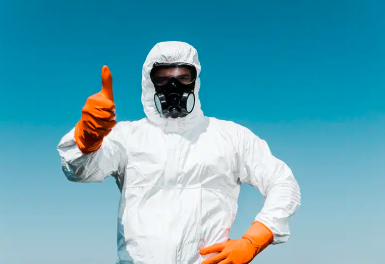Drywood Termites vs. Subterranean Termites: Key Differences
When comparing drywood and
subterranean termites, understanding their distinct characteristics is crucial
for effective termite control. One of the key differences lies in their nesting
habits and moisture requirements. Subterranean termites build nests underground
and are known for creating mud tunnels to access food sources, requiring moist
environments to thrive. Conversely, drywood termites excavate tunnels in wood,
making their homes within the very wooden structures they feed on, without the
need for soil contact or additional moisture.
Another significant difference is the
visible signs of an infestation. The appearance of fecal pellets, often
resembling fine sawdust, is a telltale sign of a drywood
termite infestation. These pellets are pushed out of the wood by the
termites, a contrast to the mud tubes associated with subterranean termites.
Furthermore, the soldier termites of each species have distinct physical
features; subterranean termite soldiers have elongated heads with powerful
jaws, while drywood termite soldiers have large, brown heads and mandibles.
Knowing how
to deal with drywood termites requires a targeted approach, different
from the methods used for subterranean termites. For homeowners, recognizing
these differences is the first step towards effective termite control.
Professional pest control services can offer tailored treatment options,
including termite monitoring and liquid termiticide applications, to protect
homes and businesses from extensive damage caused by these wood-eating insects.
Preventing drywood Termite
Infestations:
Preventing termite infestations begins
with understanding their nesting habits and being vigilant for signs like fecal
pellets. Regular inspections can help identify problem areas before an infestation
takes hold. For those concerned with ant
infestation in Sydney, it's important to note that the strategy to prevent
termite infestations differs based on their type, size and other
assessments, focusing on sealing entry points and reducing wood-to-ground
contact to deter these termites.
Maintaining a dry environment within
your property is also key, as drywood termites do not require moisture from the
soil. Repairing leaks, ensuring proper ventilation, and using treated wood can
all help prevent drywood termite infestations, safeguarding the integrity of
your property.
The Impact of Climate Change on Termite Activity
Climate change is altering the
landscape of pest activity worldwide, including drywood termites. Warmer
temperatures and altered humidity levels can expand the habitats suitable for
drywood termites, potentially increasing their presence in areas previously
less affected. This could lead to more frequent and severe infestations,
challenging existing pest management strategies.
Understanding these changes is vital
for homeowners and pest control professionals alike. As drywood termites become
more active with climate shifts, proactive measures and monitoring will become
increasingly important to protect properties from damage.
How to Inspect Your Home for Termites:
Spotting the signs of termites early
is crucial in preventing extensive damage to your home. During a termite
inspection in Sydney, our experts look for specific indicators such as
fecal pellets and the hollow sounds in wooden furniture, which suggest the
presence of these wood-eating insects. Subterranean termites need moisture to
survive, so their absence in drier areas might falsely reassure homeowners;
however, drywood termites thrive in such environments, making regular
inspections essential.
Engaging professional solutions to
protect your home is advisable. Termite inspections by professionals can
identify the early signs of an infestation, offering peace of mind and
preventing termite damage from escalating. These experts can recommend the most
effective treatment options tailored to your situation.
Professional Termite Control Services
When it comes to termite control in
Sydney, our professional team of pest experts provides most effective, tailored
solutions to both prevent and treat termite infestations. Professional pest
management encompasses a range of strategies, including the installation of
subterranean colonies monitoring systems and the application of liquid
termiticide to eliminate active infestations. These services are essential in
targeting the unique feeding habits of termites, ensuring the long-term
protection of your property.
Moreover, professional termite control
services offer comprehensive assessments to determine the extent of any termite
damage and develop a customized treatment plan. By addressing the specific
needs of your property, our experts can safeguard against future infestations,
preserving the structure and value of your home or business against the
destructive nature of termites. Schedule your home inspection today!
#PestControlSydney #TermiteTreatment
.png)
%20(2).jpg)

Comments
Post a Comment